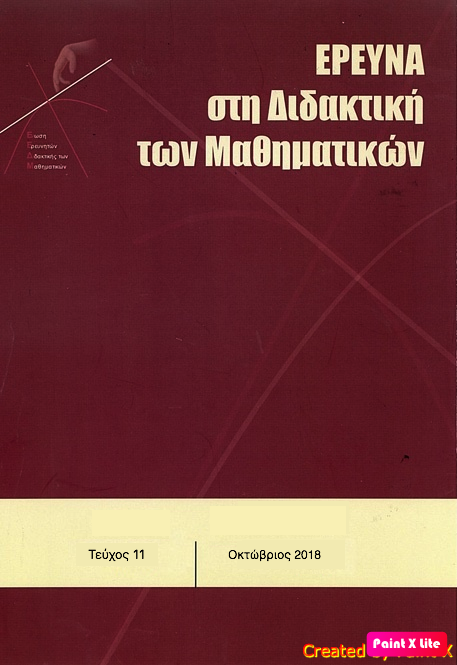ΧΑΡΑΚΤΗΡΙΣΤΙΚΑ ΒΑΘΕΙΑΣ ΠΡΟΣΕΓΓΙΣΗΣ ΣΤΗ ΜΑΘΗΣΗ ΤΩΝ ΜΑΘΗΜΑΤΙΚΩΝ: ΜΙΑ ΠΕΡΙΠΤΩΣΗ ΜΕΛΕΤΗΣ ΜΑΘΗΤΩΝ

Περίληψη
Είναι ευρέως αποδεκτό ότι η βαθιά προσέγγιση στη μάθηση των μαθηματικών συνοδεύεται ποιοτικά από υψηλού επιπέδου μαθησιακά αποτελέσματα. Σκοπός της εργασίας αυτής είναι να διερευνήσει τις συνιστώσες της βαθιάς προσέγγισης στη μάθηση των μαθηματικών. Πραγματοποιήθηκε μελέτη περίπτωσης δύο μαθητών με εξαιρετική επίδοση και βαθιά εννοιολογική γνώση στα μαθηματικά. Παρουσιάζονται δείκτες της βαθιάς προσέγγισης στους άξονες Στόχοι, Στρατηγικές Μάθησης, Στοιχεία, Αυτορρύθμισης και Κίνητρα, όπως αυτοί προέκυψαν από την προσαρμογή και τον εμπλουτισμό προηγούμενου εργαλείου μας. Οι δείκτες αυτοί μπορούν να αξιοποιηθούν στο σχεδιασμό εργαλείου μέτρησης για τις προσεγγίσεις στη μάθηση των μαθηματικών.
Λεπτομέρειες άρθρου
- Πώς να δημιουργήσετε Αναφορές
-
Μπεμπένη (Maria Bempeni) Μ., Καλδρυμίδου (Maria Kaldrymidou) Μ., & Βαμβακούση (Xenia Vamvakousi) Ξ. (2018). ΧΑΡΑΚΤΗΡΙΣΤΙΚΑ ΒΑΘΕΙΑΣ ΠΡΟΣΕΓΓΙΣΗΣ ΣΤΗ ΜΑΘΗΣΗ ΤΩΝ ΜΑΘΗΜΑΤΙΚΩΝ: ΜΙΑ ΠΕΡΙΠΤΩΣΗ ΜΕΛΕΤΗΣ ΜΑΘΗΤΩΝ. Έρευνα στη Διδακτική των Μαθηματικών, (11), 11–29. https://doi.org/10.12681/enedim.18937
- Ενότητα
- Άρθρα

Αυτή η εργασία είναι αδειοδοτημένη υπό το CC Αναφορά Δημιουργού 4.0.
Οι συγγραφείς των άρθρων που δημοσιεύονται στο περιοδικό διατηρούν τα δικαιώματα πνευματικής ιδιοκτησίας επί των άρθρων τους, δίνοντας στο περιοδικό το δικαίωμα της πρώτης δημοσίευσης. Άρθρα που δημοσιεύονται στο περιοδικό διατίθενται με άδεια Creative Commons BY και σύμφωνα με την άδεια μπορούν να χρησιμοποιούνται ελεύθερα, με αναφορά στο/στη συγγραφέα και στην πρώτη δημοσίευση.

